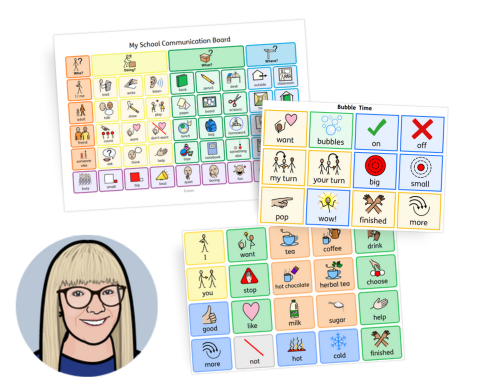- You are here:
- Home
- Communication Board Series
Communication Boards: a video series with Becca

Want to learn more about Communication Boards and how to use them effectively? Rebecca Lynch, our Symbol and Education Specialist, explains it all in this easy-to-follow video series.
Originally shared across social media, we’ve made it easier for you to watch the entire series in one place. These short clips cover everything from board types and colour coding to vocabulary, interaction, and modelling techniques.
Whether you're a teacher, therapist, parent, or AAC user, you'll find practical tips to help make Communication Boards more engaging and effective.
Q&A Session
In this Q&A session, Speech and Language Therapist Ruth Jones joined Becca to answer your questions about effectively using Communication Boards. Ruth shared valuable insights drawn from her extensive experience supporting autistic individuals and AAC users, while Becca provided practical strategies for symbol-supported learning.
Watch the recorded session below for helpful advice on vocabulary selection, Gestalt Language Processing, multilingual communication, classroom implementation, and more.

Questions:
Make your own symbol resources

With Widgit Online, you can create your own visual learning resources in your web browser using Widgit’s unique 20,000+ symbols that cover 60,000+ words and phrases translated into 83+ languages - enabling you to nurture a fully inclusive learning environment where students can communicate confidently and independently.
- Support EAL teaching - Use our Dual Language feature to enable EAL students to access the curriculum and develop their communication skills
- Support wellbeing - Create materials to support emotional understanding
- Save time, edit, re-use - Quickly create and update materials with symbols
- Use 100s of templates - Save time and use general pre-formatted templates
- Personalised - Use your own photographs or web images to meet individual needs
- Inclusive - Change skin tones to support more inclusive representation
- Use online or as printed resources - Use on tablets or other devices.











